Queens of Style honorees make their graffiti marks in southwest Atlanta
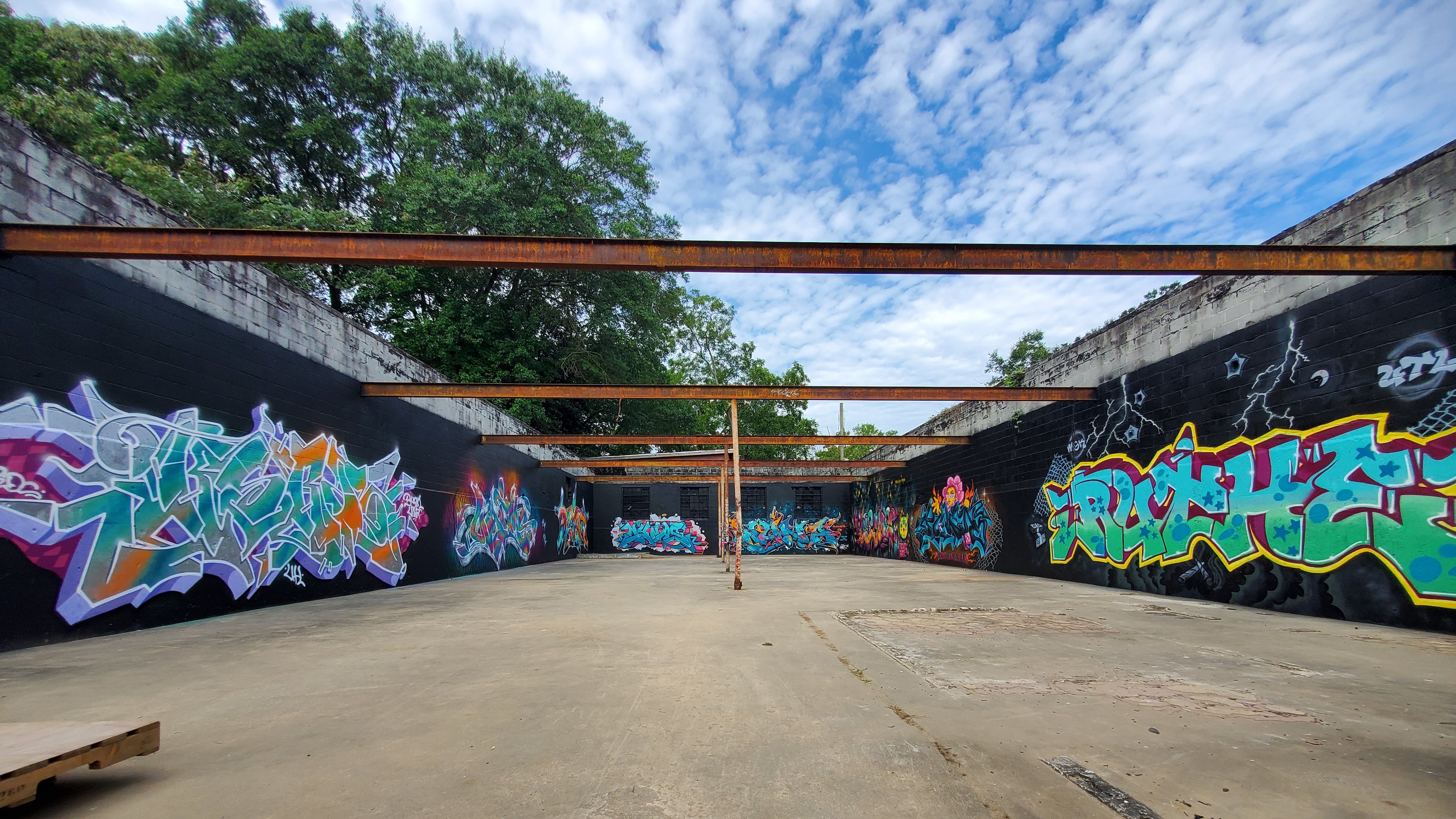
This story was originally published by ArtsATL.
Graffiti has the power to consume abandoned properties as naturally as moss covers a damp rock, their artistic transformation serving as visible evidence of a vibrant and often secretive style-writing culture. Style writing is considered by many to be the most skillfully executed, intricate and artistic level of graffiti.
In an art-imitates-life moment, the casual observer would probably mistake the site where an organized painting event took place in August — a derelict roofless shell of a structure — for one of those organically occurring graffiti sites.
But that’s exactly the point.
When the Atlanta Style Writers Association planned an invitational it called Queens of Style, it wanted to craft a genuine, in-the-wild Atlanta style-writing experience.
The building shell, at 1141 Allene Ave. SW in Atlanta’s Oakland City neighborhood, was home to an event featuring eight women graffiti artists from Atlanta and across the United States and Europe who were selected for their talent and creative contributions in the style-writing community.
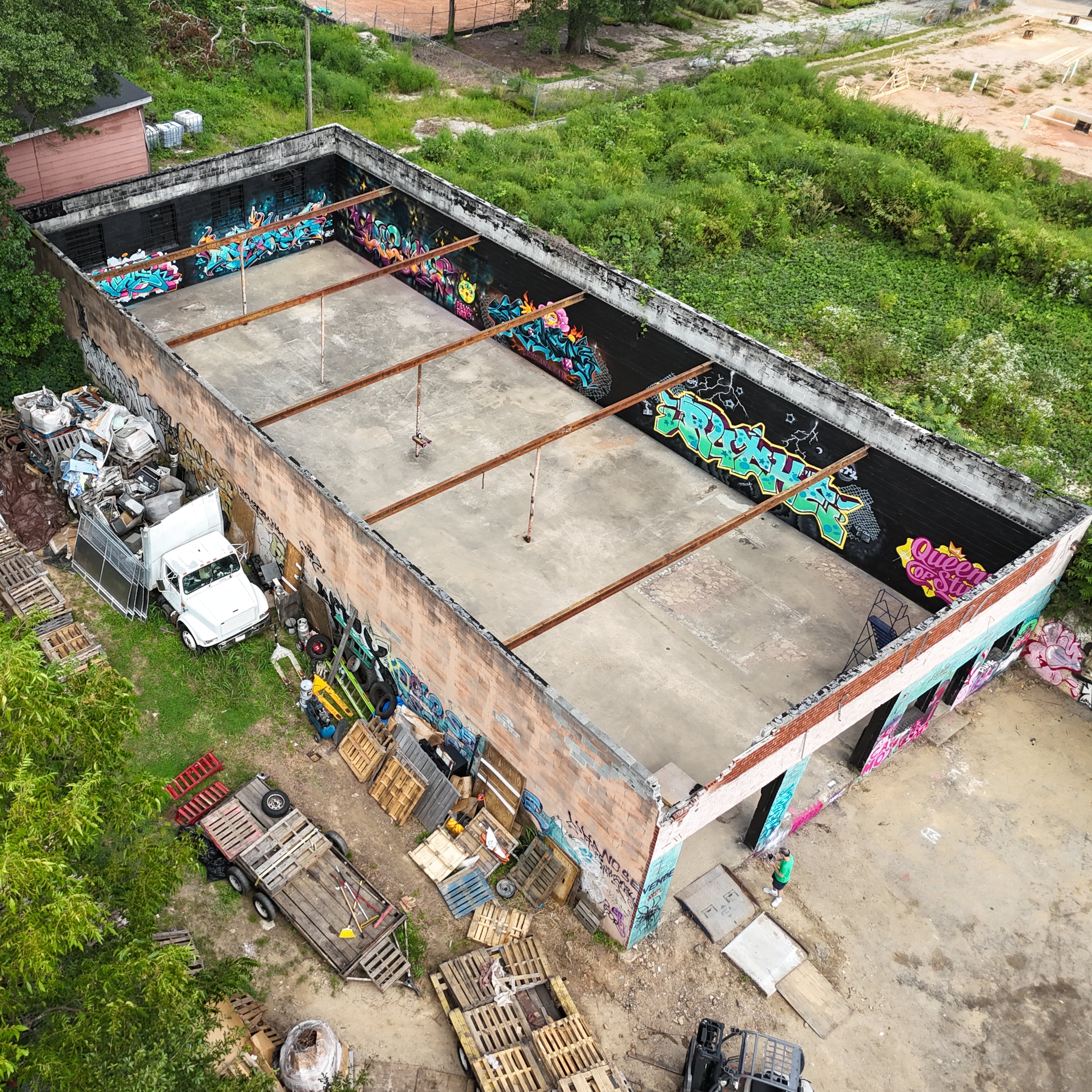
Indeed, the site of Queens of Style’s activation was one of the stars of the event. It’s a style writer’s dream: bare concrete, exposed rusting beams and gaping doorless loading docks on a weed-infested, run-down lot scattered with old pallets.
When participant Lady Nina from Italy first eyed the site, she exclaimed, “Wow, graffiti is this!”
The structure is currently behind a fence because there is still a tenant renting the property, but the pieces painted for the event are visible from the sidewalk, and the graffiti-appreciating public is encouraged to visit for a viewing.
Although plans are not finalized, the fence may come down, and Queens of Style could become more than a one-time happening.
Here is the lineup of writers from this year’s event:
- RUTHE from Atlanta is a member of the Untouched Letters Crew. Her first foray into artistic vandalism was at age 7 when she took a crayon to her parents’ fireplace.
- MEME from Richmond, Virginia, is an ardent skateboarder with Indigenous roots who founded the Few and Far collective for women street artists.
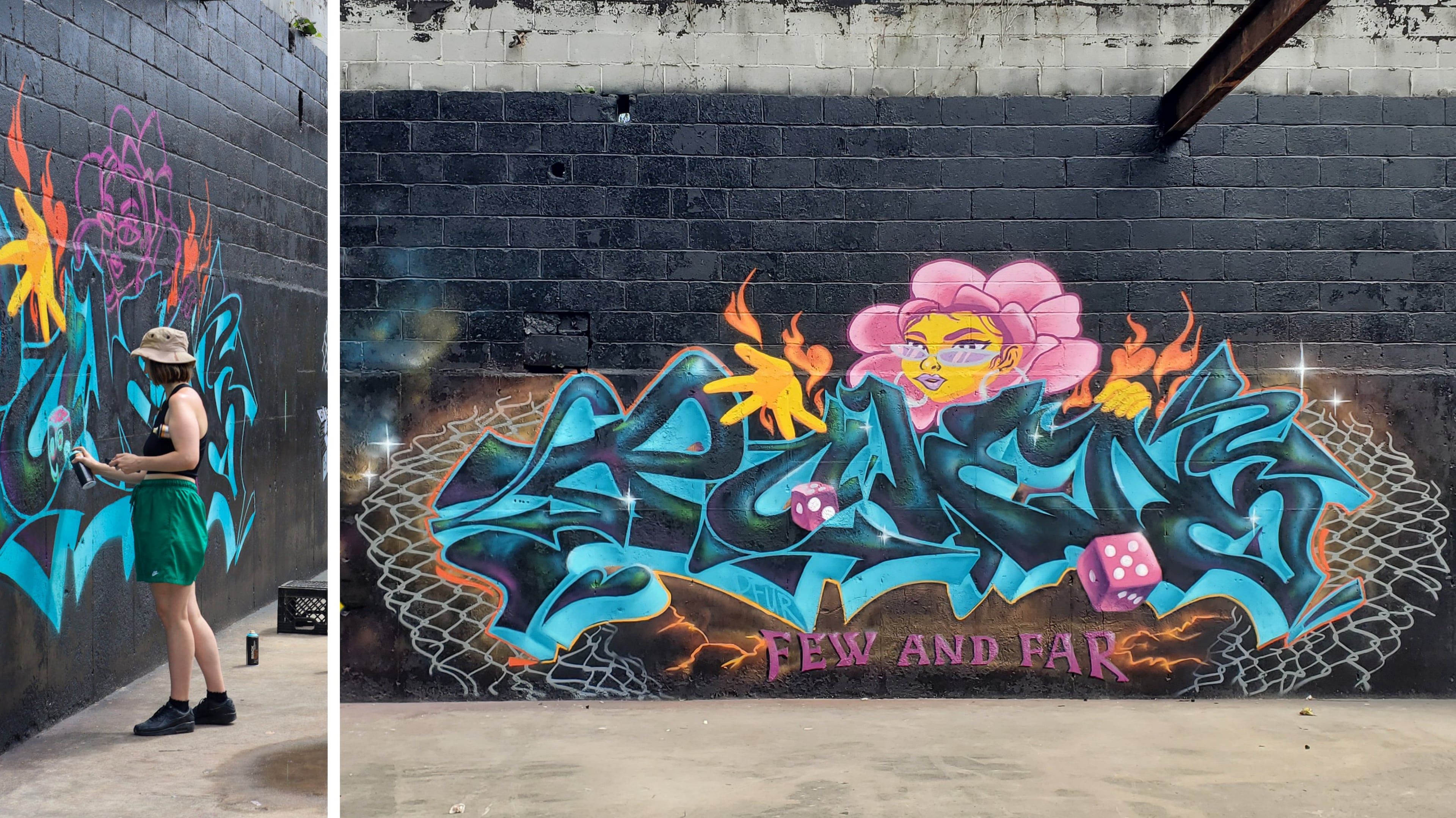
- POLEN from Baltimore, was introduced to graffiti in Washington, D.C., in 2010 when she photographed her friends painting.
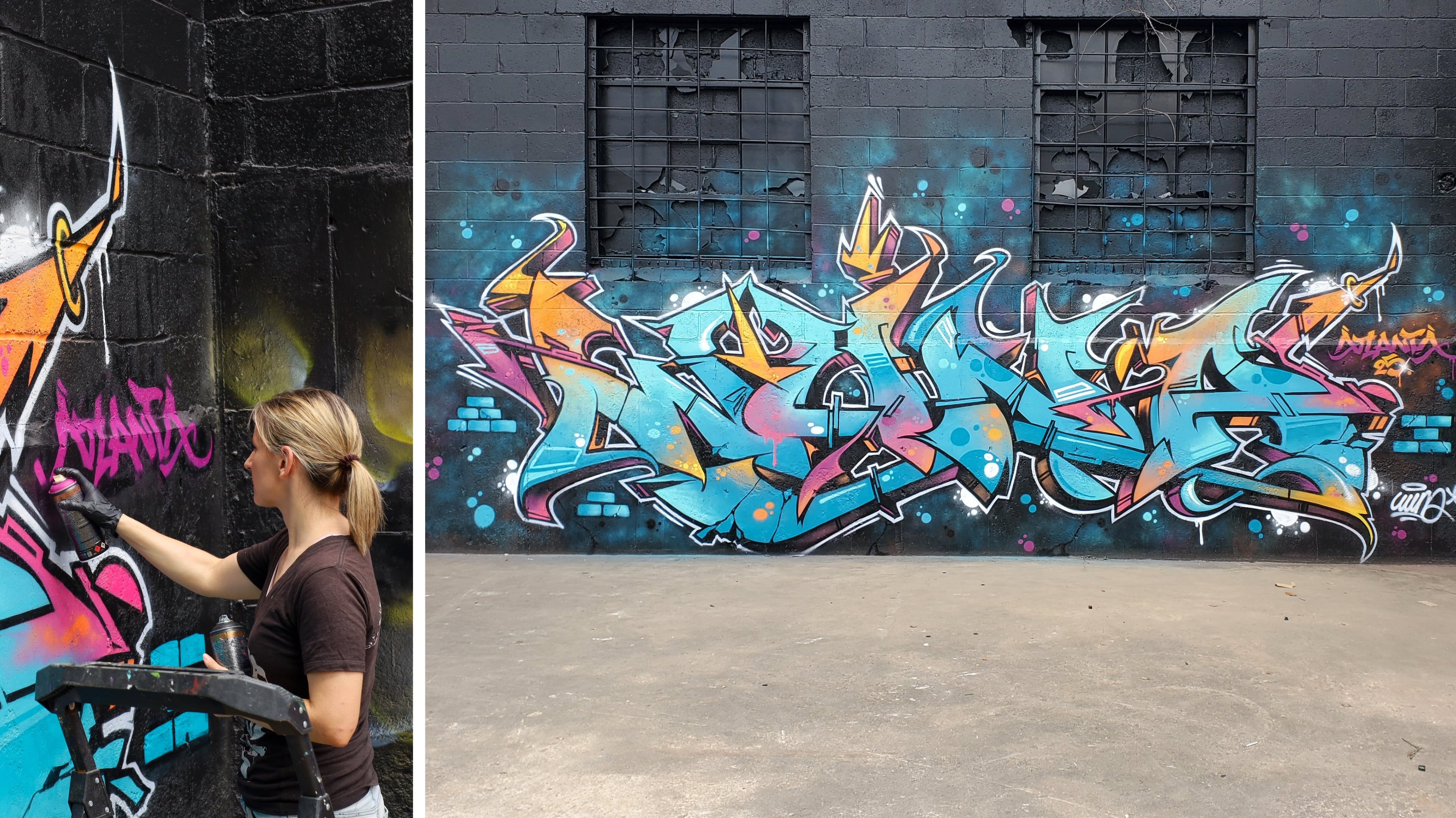
- Wuna from Paris was first exposed to graffiti on the walls of her favorite skatepark. She has been featured in several books and documentaries about graffiti.
- Lady Nina from Rome, Italy, chose her graffiti handle based on an anime character created by Hiroshi Sasagawa in 1976.
- Dizy, a trailblazer of graffiti in India with residences in Berlin and Hamburg, Germany, uses style writing to defy the rules and norms of Indian culture.
- Whims from Atlanta began painting trains in 2012. Her evolving style sometimes features florals and landscapes.
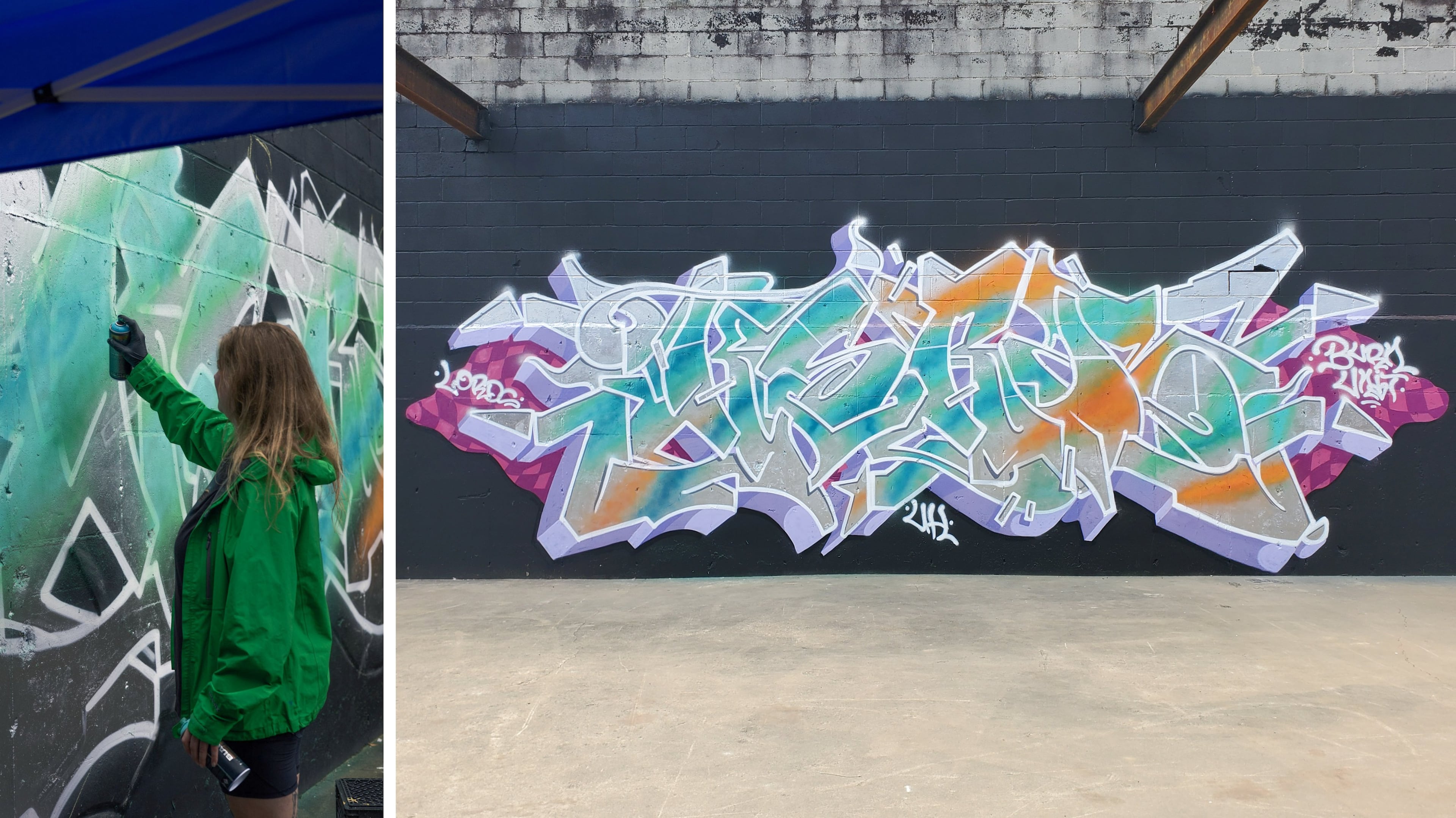
- KSRA — pronounced like the phrase “que sera” — is a Seattle resident with roots in Atlanta. Her fine art features distorted images of iconic storefront signs from shuttered Seattle businesses.
“I was fortunate to already call most of them friends or crewmates before this event,” said Whims, curator of Queens of Style. “I realized I had the opportunity to bring together women from across the globe and to show Atlanta something it had never seen before.”
Grants from Atlanta Contemporary’s Nexus Fund and the Art Share Foundation supplied a small budget that enabled the team to pay for participants’ flights and lodging and to purchase spray paint.
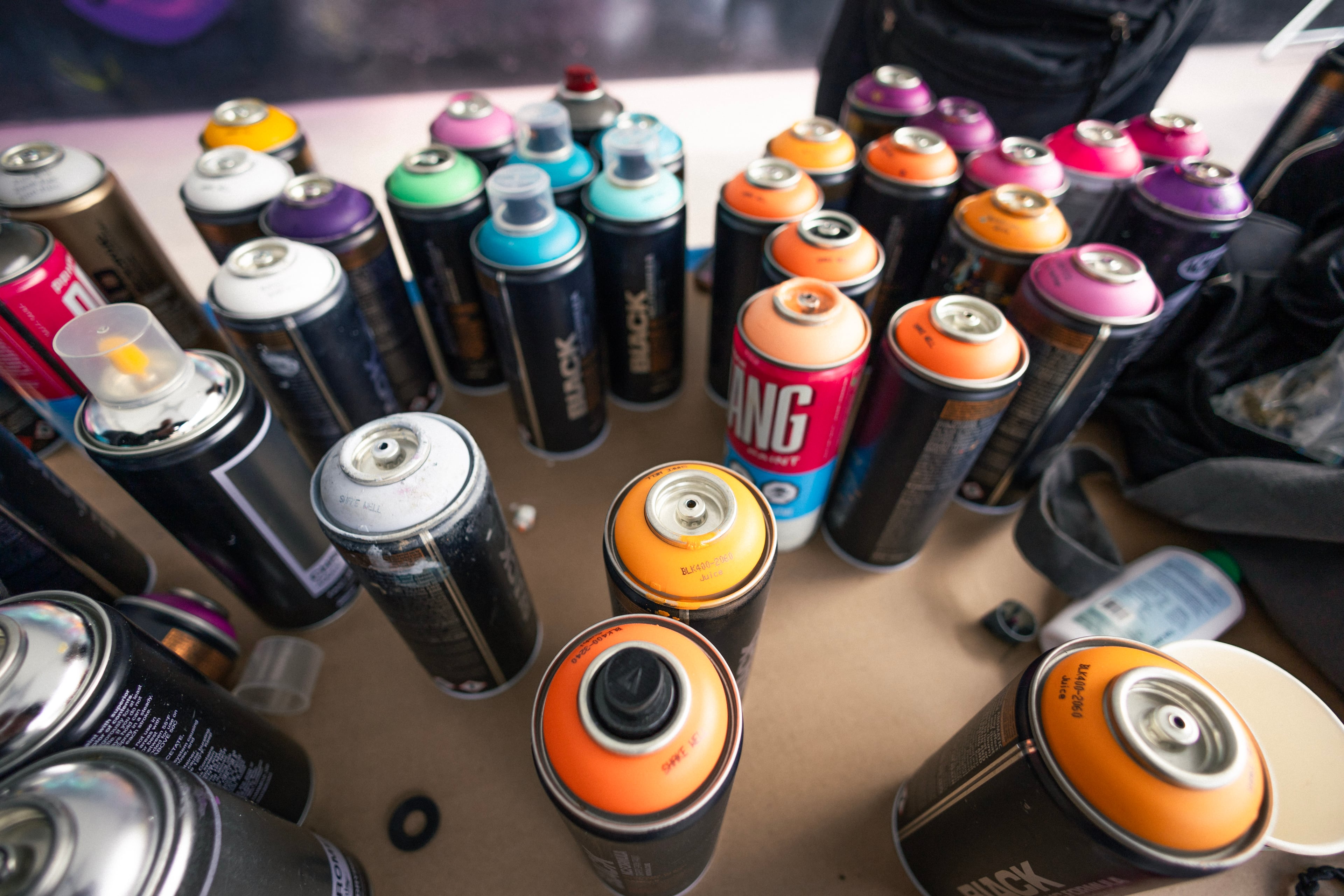
Naomi, founder of the Atlanta Style Writers Association, who declined to give her last name to avoid putting the spotlight on herself, said, “Queens of Style Atlanta has really been a long time coming.”
Celebrating women in style writing “was huge,” she said, “because style writing in general is not celebrated, and women in style writing are a minority of a minority subculture. Style writers were the first people to put spray paint on walls. In terms of continuously evolving and improving the culture, one thing that’s really important is representation. And that means representation for women.”
Whims said painting with other female style writers was “a blast. … It was powerful to look around and see so many different styles and perspectives represented. It showed just how much women bring to the world of graffiti.”
If you go
Queens of Style
Free viewing invited daily from the sidewalk at 1141 Allene Ave. SW (Oakland City neighborhood), Atlanta.
If you visit the site to check out the Queens of Style’s work, you can expand your experience and take a self-guided tour of street art in the area. Take a short walk north on Allene Avenue, then west on the Atlanta Beltline Westside Trail to view the Atlanta Style Writers Jam artwork under the Lee Street Bridge. Continuing down the Beltline offers a chance to catch a wealth of style writing and murals all throughout the area continuing from Beltline along White Street.
::
Arthur Rudick created the Atlanta Street Art Map in 2017 after retiring from a successful career as an engineer with the Eastman Kodak Co. and the Coca-Cola Co.. His first experience of art was seeing an Alexander Calder mobile as a child in the Pittsburgh airport. Rudick is ArtsATL’s street art expert and a regular contributor.

MEET OUR PARTNER
ArtsATL (artsatl.org) is a nonprofit organization that plays a critical role in educating and informing audiences about metro Atlanta’s arts and culture. ArtsATL, founded in 2009, helps build a sustainable arts community contributing to the economic and cultural health of the city.


